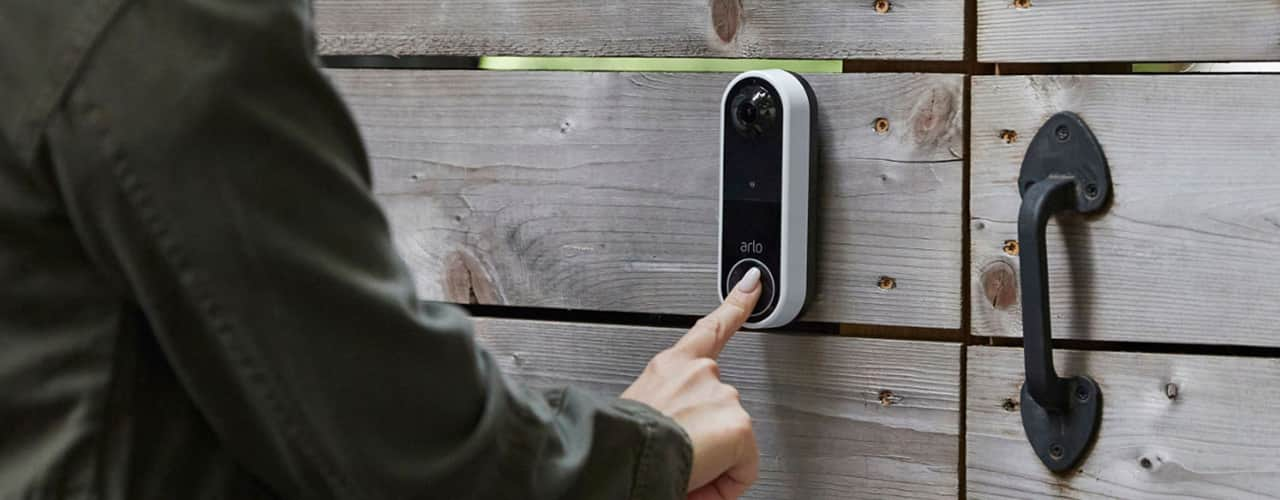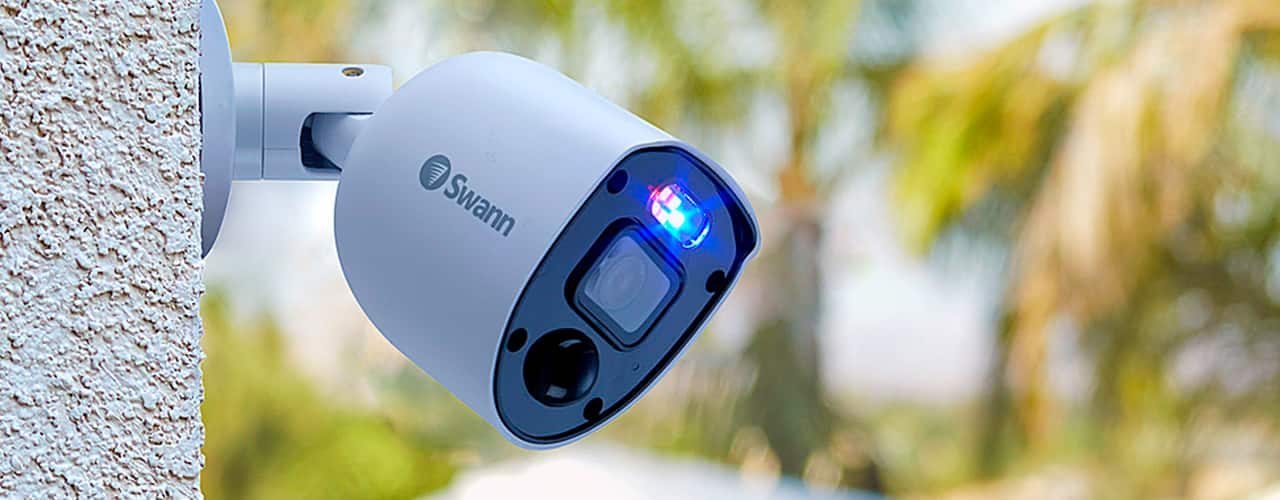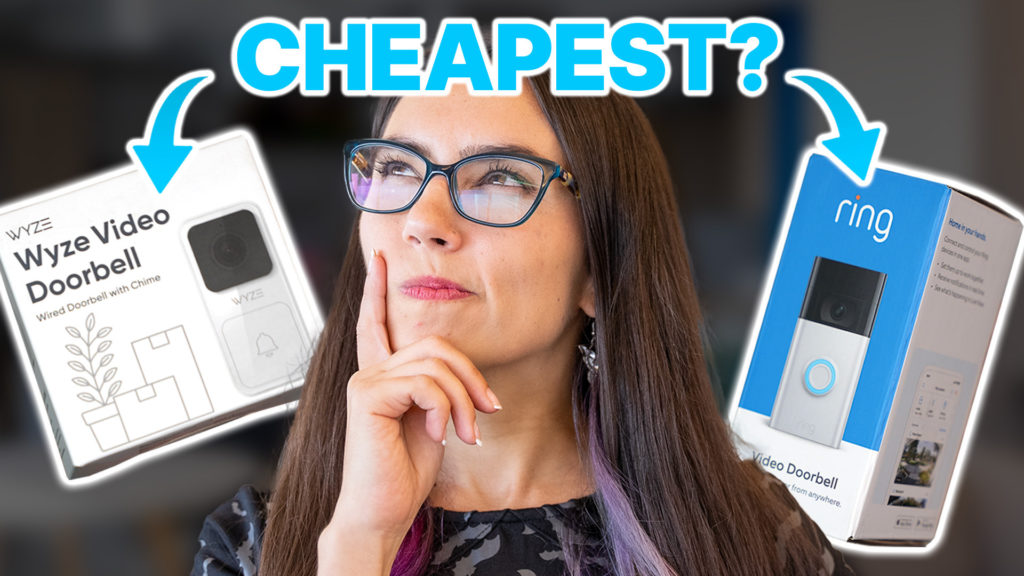Advertiser Disclosure: At Slickdeals, we work hard to find the best deals. Some products in our articles are from partners who may provide us with compensation, but this doesn’t change our opinions. Our editors strive to ensure that the information in this article is accurate as of the date published, but please keep in mind that offers can change. We encourage you to verify all terms and conditions of any product before you apply.
Reading Time: 8 minutesAccording to statistics, only 17% of homes in the United States have security systems, and burglars are three times more likely to target homes that don’t have a security system installed. With the seemingly rise in crime, the need for a security system has become more apparent now than ever.
Why buy a home security camera system?

Credit: Ring
One of the biggest benefits of buying a home security or surveillance system is peace of mind. A home security system is an excellent investment that gives your family peace of mind and acts as a potential deterrent for burglars. Modern security systems nowadays such as doorbell cameras give us the ability to watch our homes in real-time on our smartphones from anywhere. You’ll take comfort knowing if there is a break-in, your cameras will capture evidence of the crime that you can hand over to the authorities.
If you do not have a security system in your home, we’ve put together a guide to help you navigate the daunting task of choosing the right security system for your home and family’s needs.
Types of Home Security Cameras

Credit: SimpliSafe (2), Arlo, Night Owl
With so many features and brand options on the market, it’s difficult to choose the best home security camera for your household.
Home security cameras come in many varieties, including:
1. Wireless security cameras
Wireless cameras are connected to your home’s Wi-Fi network, which gives you the ability to access the security footage from your smartphone. You can also get alerts and notifications through your phone. Note that these cameras do generally require the use of a power source. If you need a completely “wire-free” camera, there are internet-connected options that use removable or rechargeable batteries.
2. Video doorbells
These are exactly what they sound like: a doorbell with a camera attached. Video doorbells are extremely popular because of their affordability and ease of use. These video doorbell cameras are triggered by motion detection sensors which start recording when someone rings the bell or if there is movement near the front door. The footage can also pick up audio in front of your door.
3. Floodlight security cameras
As a popular choice for outdoor security cameras, these merge security cameras and bright floodlights together in one device. When the cameras sense motion, the floodlights are activated and will cast a bright light over the area, making a potential intruder highly visible and hopefully scaring them away.
4. Wired security cameras
These cameras must be wired into a power source as well as a hard drive or internet connection. This often means that two separate cords are needed for each purpose (power and data). However, some cameras use PoE (Power over Ethernet) meaning that only a single cable is actually needed. Wired security cameras are capable of recording around the clock, with some cameras capable of storing footage for the last 30 to 90 days.
The wide variety of types available can be overwhelming and confusing, but the best starting point is to consider your basic purpose and the types of features that you would need or want for your family.
How to Choose a Security Camera for Your Home

Credit: Arlo
There are many factors to consider when choosing a security camera, including the layout of your property, your neighborhood, how much coverage you want, and so much more.
Here are some tips on how to get started:
1. Choose a camera type
Do you want a camera that is wired or wireless? Do you prefer battery-powered cameras or would you rather have them connected to a power source? You’ll need to decide what type of camera is best suited for your property and security concerns. If you see yourself forgetting to recharge a camera when it’s at the end of its battery life, consider hardwire cameras.
For any outdoor cameras, do pick one that is weather-resistant so it can endure the rain and snow. Check to ensure that there won’t be excessive glare from the sun as well.
2. Decide your coverage area
Will you need indoor cameras as well as outdoor cameras that are mounted on walls and can flash bright lights? While some homeowners want every boundary wall and room surveilled, others simply want to know who is coming through the front door.
The most common areas that homeowners want security coverage for are the front door, back door, driveways, and certain entryways.
3. Check for ease of installation and use
As with any tech device, some systems have better user experience design than others. They also vary in terms of ease of installation. Some cameras are as simple as plug-and-play and easier to install, while other cameras might require a professional to assist with hardwiring during installation. The cost of installation, if any, should be factored into your budget.
4. Review and compare camera costs
There are a wide range of cameras on the market today, and many come with an array of high-tech features that could drive up the cost. Pick one that fits your budget and has all the essential features that you need. Some cameras may come with optional features such as 24/7 recording which may sound nice, but you likely don’t need it to be constantly recording footage that would just take up more storage space.
5. Choose how you want footage to be stored
Many wireless security cameras store your recordings in the cloud—but only for so long. In addition, you may have to pay ongoing subscription fees to access this feature. Other cameras keep recordings on SD memory cards or USB drives. Wired cameras can record large amounts of footage to an external hard drive.
If you’re looking for the best home security camera system with a monthly fee, choose one that has ample storage for footage.
6. Consider your privacy
Home security cameras are a form of surveillance that makes you feel safer, but this also can work against you.
Since footage of your property is being recorded and stored, some family members may fear footage from the property falling into the wrong hands. When making your purchase, consider choosing a product that has two-factor authentication as this makes it far harder for hackers to get into the system.
There is also the concern of a family member’s privacy—knowing that you are constantly being recorded in your own home can be extremely uncomfortable, so discuss with your loved ones whether having cameras in every room is even necessary.
Features To Look for Home Security Cameras

Credit: Swann
1. Good Video Quality
You don’t want to be dealing with footage that is blurry or grainy. The whole purpose of a security camera is to be able to capture high-quality images where you can make out faces and other identifying objects. You will want to choose a higher-resolution camera that offers high-definition (HD) resolution at least 1080p or higher.
2. Adjustable Views
Need to take a closer look? Zooming in on footage or imagery means you’re going to get a more detailed look at what’s happening or happened on your property. Many customers are opting for what’s known as Pan-Tilt-Zoom (PTZ). This refers to a feature where the lens of the camera moves in such a way that it can sweep across the room (pan), around the room (tilt) and zoom in. It’s a cost-effective way to get as much range as possible without having to install several cameras.
3. Two-Way Audio
Having a camera with two-way audio allows you to use it as an intercom so that you can speak to anyone on the receiving end. Whether you’re telling your kids that it’s bedtime, or warning a potential intruder to get off your lawn, two-way audio has become a standard feature on most wireless systems.
4. Night Vision
Most property crimes take place under cover of night when individuals can sneak in without the fear of being detected. Because of this, the demand for night vision in a home surveillance camera is high. As with any feature, the quality and price vary wildly but infrared night vision is a must-have for some.
5. Motion-Activated Triggers
Another feature to look for is a motion-activated trigger and alerts when it detects movement. There are, of course, other variables in the mix, like the strength and speed of the Wi-Fi signal on the property, but you should opt for a camera that reacts quickly and sends alerts to your phone immediately. For example, you’ll want to be alerted the moment that there is suspicious activity in your backyard in the middle of the night.
6. Emergency Connectivity
It has by no means become a standard or essential feature, but some camera systems now have a built-in trigger for emergency services to arrive, thus cutting out the need for the homeowner to call 911.
7. Web and Smartphone Access
You also want to consider HD security cameras that offer live access so that you can view footage from your phone or computer in real-time. If something is happening, you want to be able to check on your property at any time. Most camera brands will come with a mobile app that you can use to access this video.
8. Facial Recognition
Some cameras are now able to generate a database of ‘familiar faces’ within the home environment and detect the presence of an unfamiliar face. While some consider this an essential feature so you are alerted if unfamiliar people are on your property, others feel it is taking home security a step too far.
How much do home security cameras cost?
Security cameras come in a wide range of price points and vary based on the available features.
Most affordable cameras
The most affordable cameras start at around $35 for a single camera and often come with the most basic features that you would want, including a motion-triggered sensor, continuous recording capability, push notification apps, and a rechargeable battery. Popular examples include the Wyze Cam v3 (which also comes with two weeks of free cloud storage, and the Blink Mini which also has night vision, two-way audio and works with Alexa.
Mid-range cameras
With so many options on the market, one can get good quality at mid-range prices from around $150 to $300. A great example of a quality mid-range camera is the Google Nest Cam which has great video quality, local backup storage and has been praised by many tech gurus for its quality design and aesthetic.
High-end cameras
If you want a high-end camera with all the bells and whistles, you’re looking at spending between $300 and $1500. These cameras include all the essential features plus great hi-tech add-ons depending on your need. For example, the popular eufyCam 2 Pro gives crisp 2k clarity, advanced night vision and clear two-way audio.
How much is cloud storage for security camera footage?
Monthly subscription fees for storage of cloud data from security camera footage can range from less than $2 a month to as high as $6 a month per camera. The more cameras you have, the higher the monthly fee will be. You can generally save footage for 30 days, but some plans offer up to 60 days of storage.
















